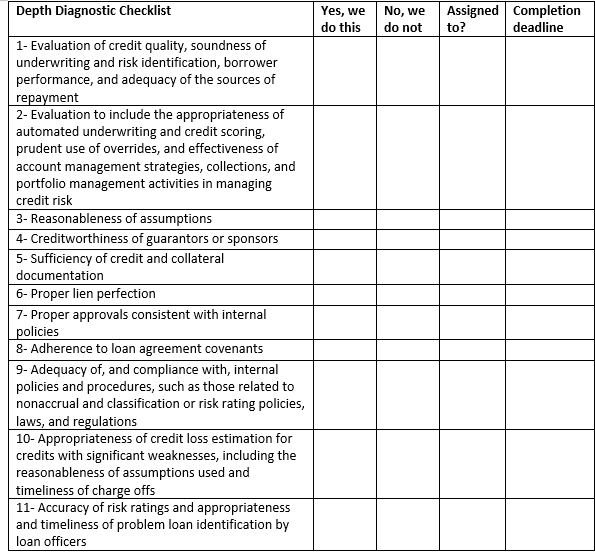Considering the scope and depth of your financial institution’s loan review process is a great way to identify gaps in training and create more efficient operations. But what are scope and depth, and how do they apply to roles and loan review processes at your bank?
In a banking context, the scope is the number of different operations you do on the job and the frequency with which you do them. For example, if you work in a factory assembly line putting doors on cars, you are doing one specialized task repeatedly, so the scope of your job is low. On the other hand, if you rotate between putting doors on cars, putting seats in cars, and checking the steering mechanism, your scope is high because your job has less frequent repetition and more variation.
Depth is the amount of control you have over your tasks. Low-depth roles adhere to strict guidelines, and employees have very few decisions to make. Usually, jobs involving mass production through assembly lines have low depth. On the other hand, high-depth jobs typically include many decisions and allow employees to set their own pace. Most actors’ careers are high-depth. They are given parts and told to interpret the characters and lines in their own way. You would also have high depth if you were given a project within your company and told to develop it at your own pace. Servers taking food orders, bringing drinks, and talking with their customers have a broader scope than dishwashers in the kitchen. Knowing the scope and depth of a specific job can help fill it with the right person to carry out the required tasks.
Due to the varying scope and depth of each position within an organization, some employees will be more capable and better suited to complete certain responsibilities than others. But how does this apply to loan reviewers? How broad a field does loan review need to plow to unearth potential credit risks and assess overall credit quality?







